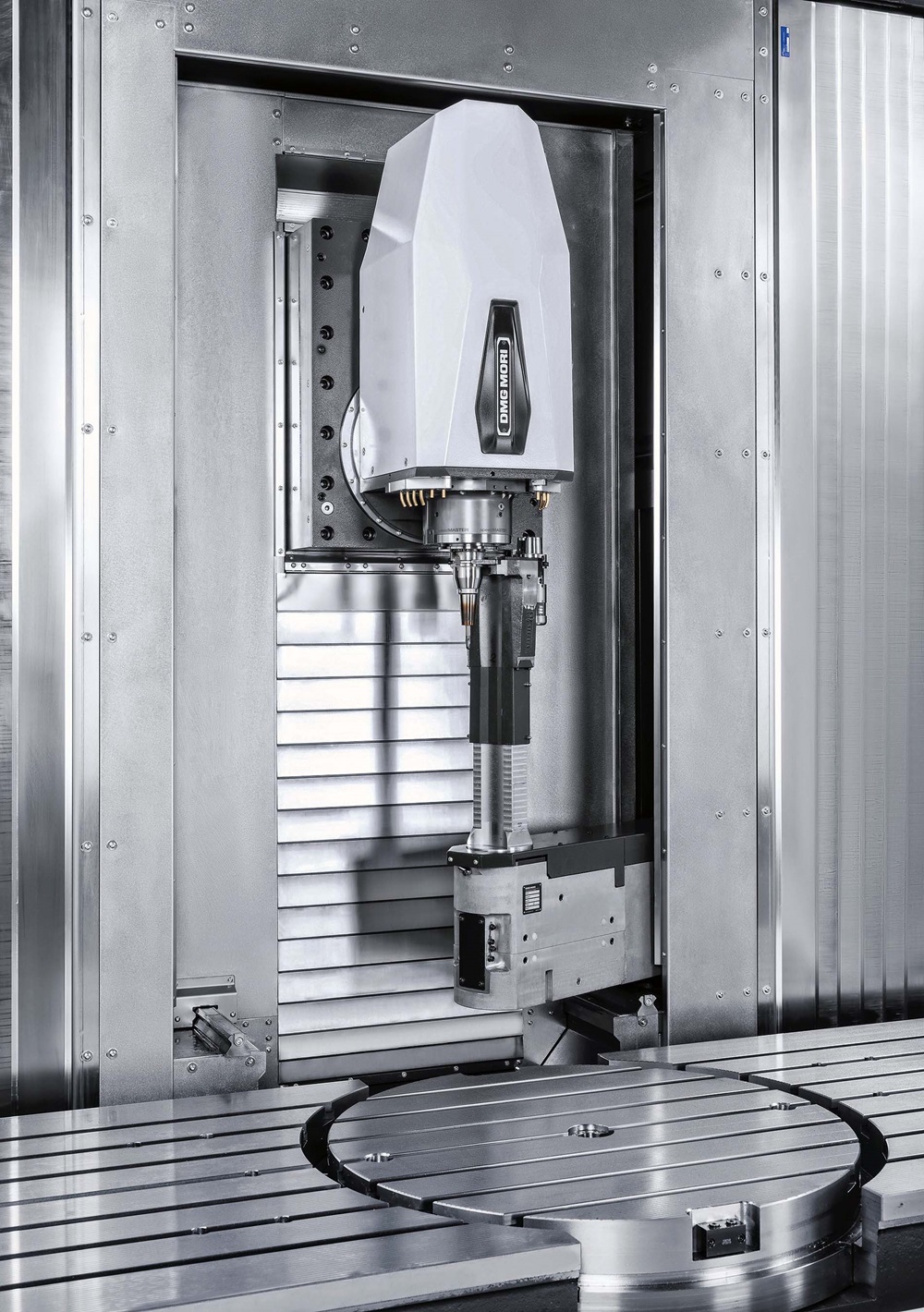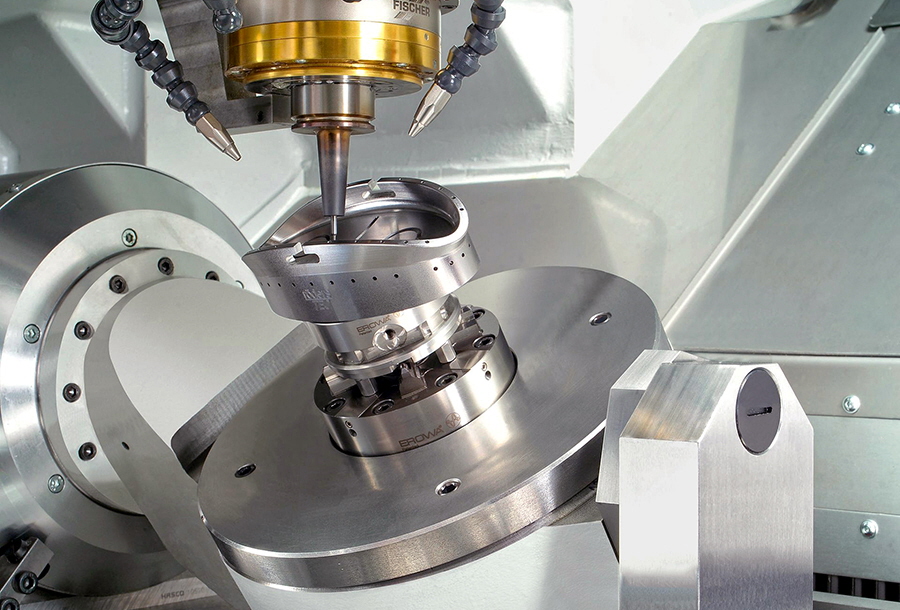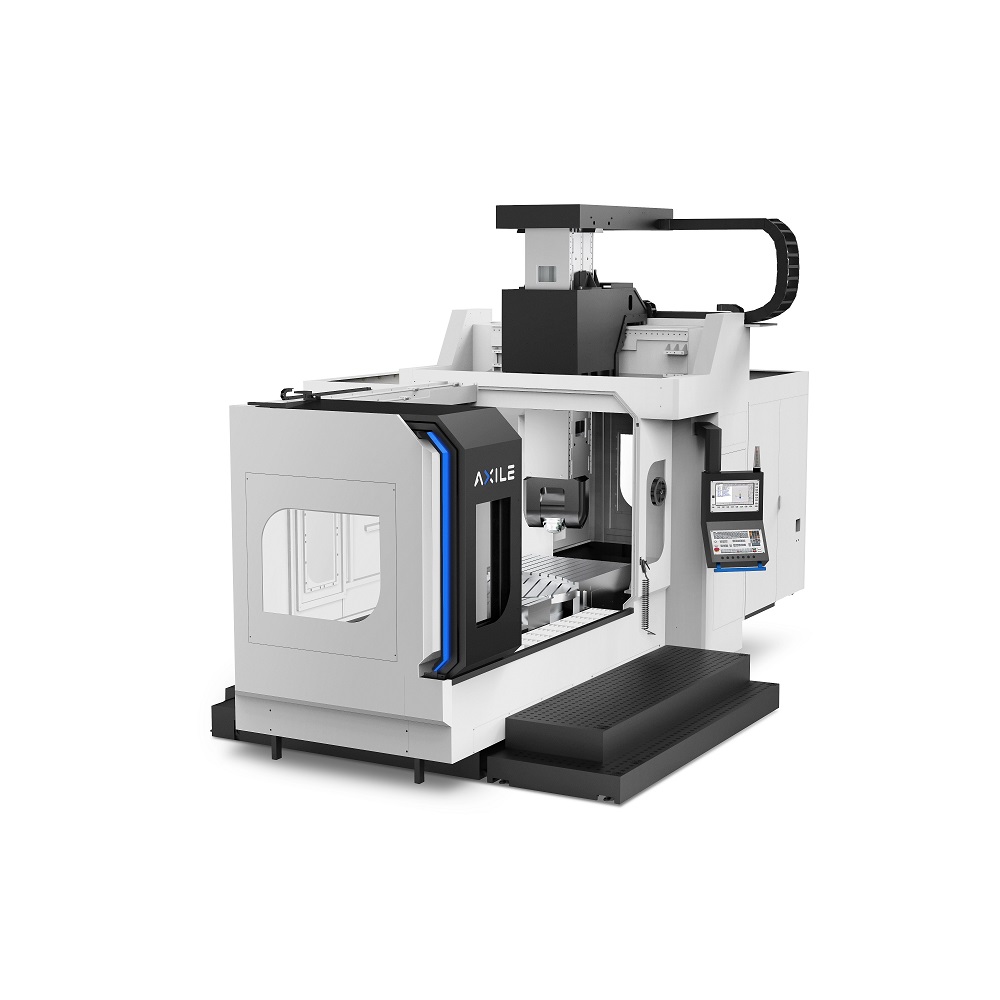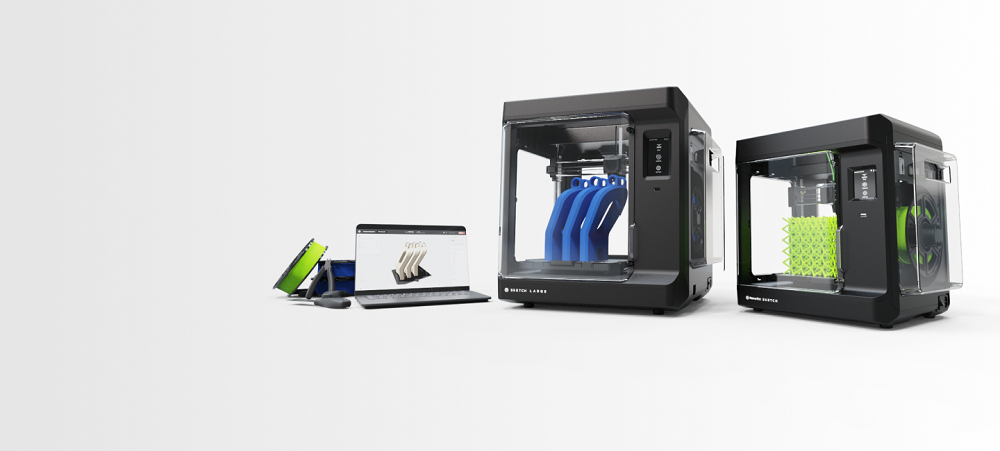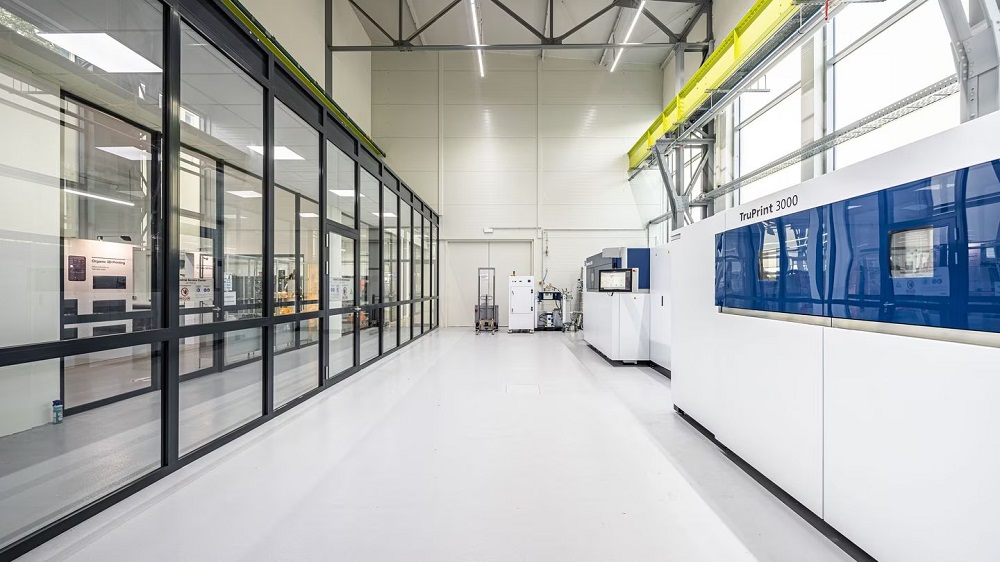A new, larger size of travelling column machining centre in the DMF range manufactured by DMG Mori is now available to provide even more versatile production opportunities within a machining envelope of 3000 x 1100 x 1050 mm. The modular DMF 300|11 with B-axis swivelling spindle head represents a redesign of the established configuration that, compared with the previous series, has seen a 40% expansion in working volume and a 20% increase build rigidity.
The ±120° B-axis houses an integrated 15,000 rpm speedMASTER HSK-A63 spindle as standard, but is available with a 20,000 rpm version, or with a 12,000 rpm powerMASTER spindle offering 288 Nm torque.
The rigid table running the length of the DMF 300|11 accepts workpieces weighing up to 5000 kg for the three- and four-axis machining of large components. Alternatively, it is possible to insert an optional partition in the centre to allow safe pendulum machining of smaller parts.
Fully interpolative five-axis machining can take place at either or both ends, or else in the centre, following the addition of one or two optional rotary tables set flush into the main table surface. The machine can accommodate components weighing 1200 kg, while each C axis is available with a torque drive to provide the possibility of in-cycle turning operations at up to 700 rpm.
In some cases, it may be more expedient to add one or more A-axis rotary tables to enable five-axis operations on horizontally-mounted parts weighing up to 500 kg. It is equally feasible to mount a static column or tombstone on the table for work holding, swing the spindle head through 90° and use the DMF 300|11 as a horizontal machining centre with the added benefit of B-axis motion.
For further information www.dmgmori.com






